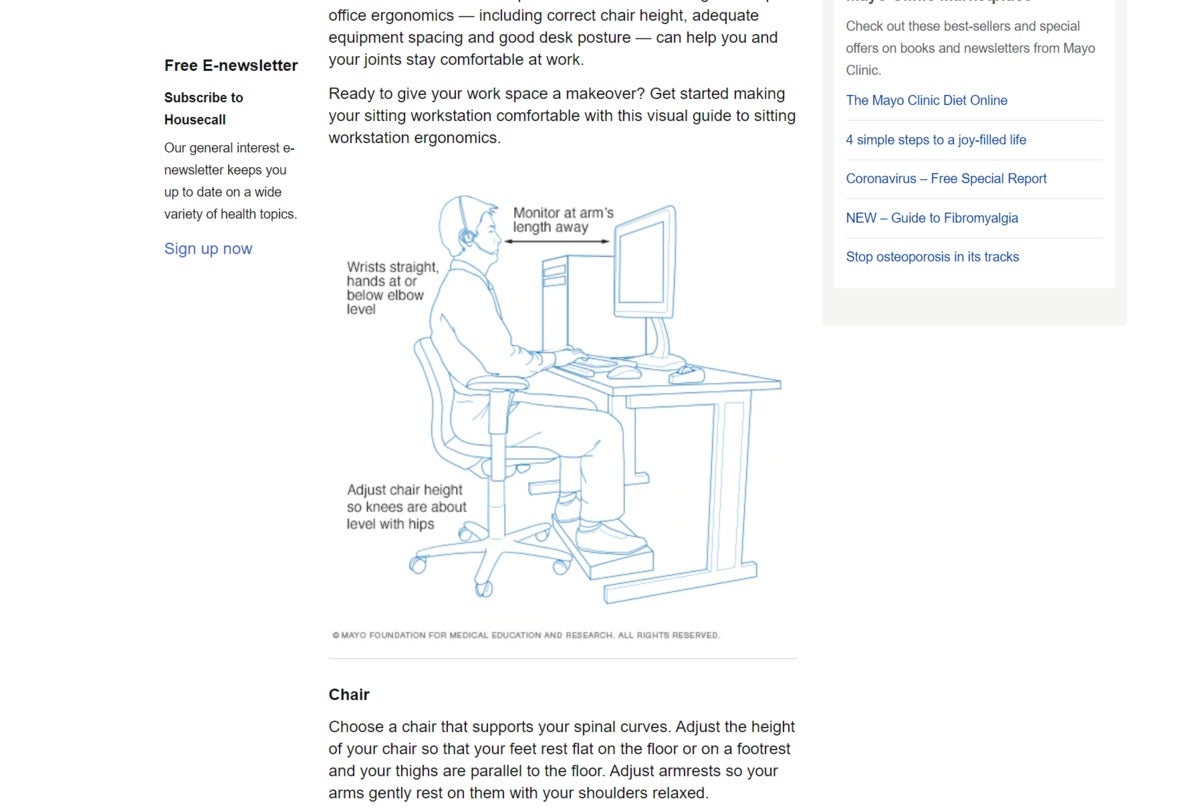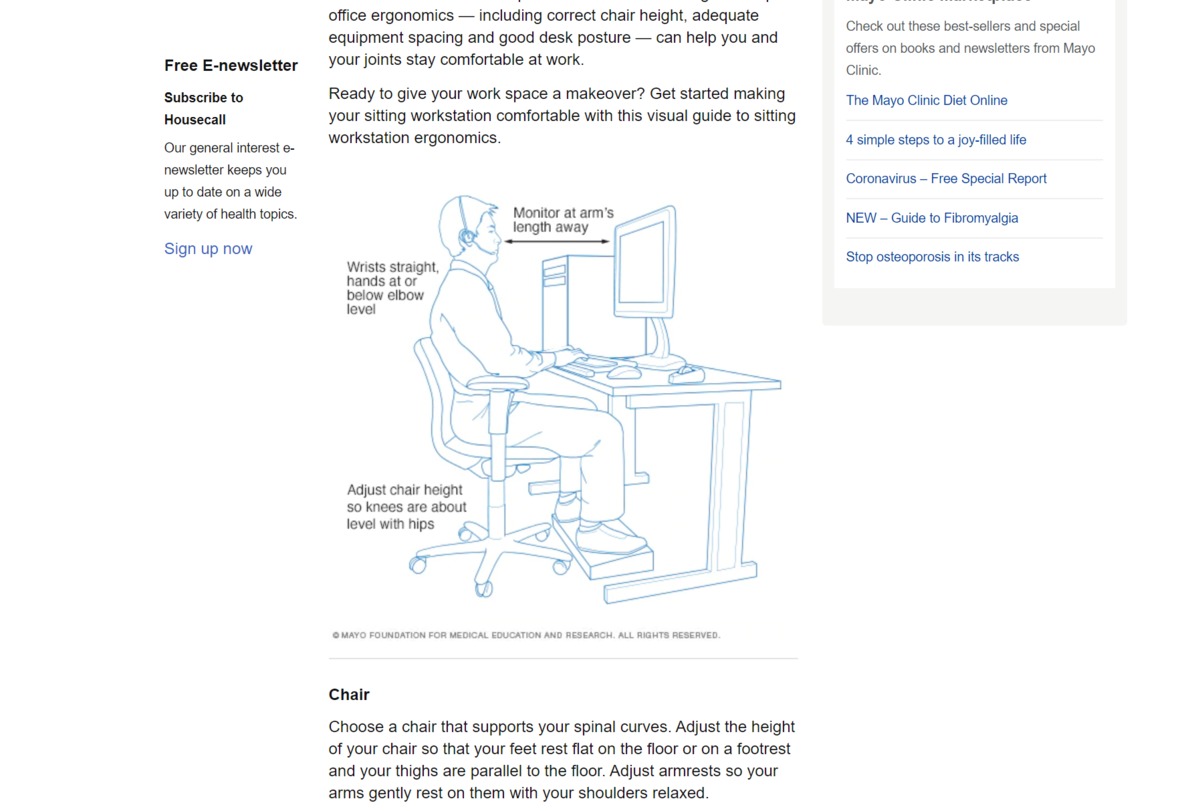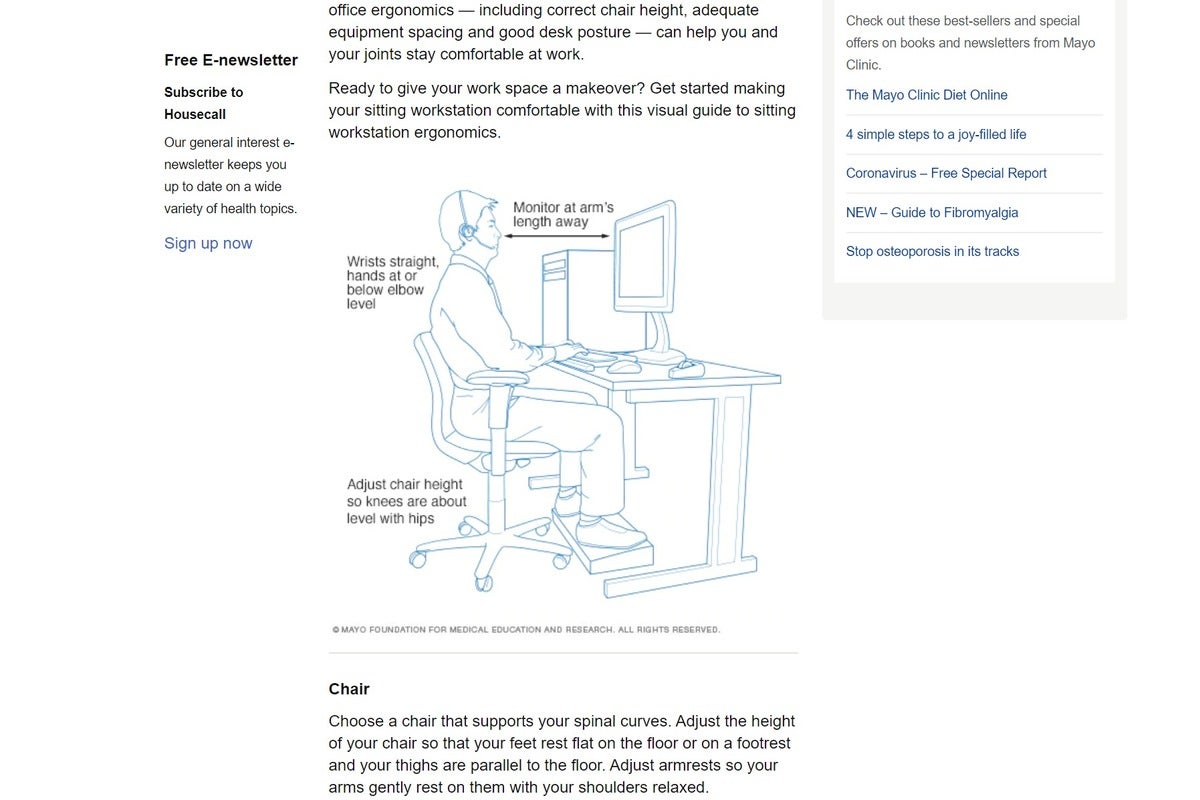
Still working from home? Many of us are. What follows is some advice and a selection of apps that should help you optimize your workspace to protect your health during the remote work day.
What are ergonomics?
The Mayo Clinic explains how good office ergonomics can help mitigate work-related neck and back pain and potential problems with repetitive strain injury (RSI), arthritis and other physical challenges that arise when we spend too long strapped to an office chair.
This advice is just as valuable in a home office as in a conventional workplace, and as the pandemic means millions must now work from home for many months more, it makes sense to improve your WFH environment.
Some of the most important pieces of ergonomic advice include:
- Place your monitor at arm’s length at or slightly above eye level.
- Keep your wrists straight at or below elbow level.
- Adjust chair height so your knees are at about the same level as your hips.
- Keep objects you regularly need to use at hand so you an get them without reaching.
- Stand up and take breaks.
So, are you putting all this advice into practice? Have you audited your home office environment to ensure it is an ergonomically safe space in which to work for hours each day?
Fortunately, there are several solutions to help you work more healthily and even to design a new work space.
The app for that: Ergonomics
Available for iOS, Ergonomics costs just 99 cents and includes a good collection of tools to help improve your workplace health, including badges you can unlock to help stay motivated to do so.
Features include:
- Stretch break indicator and stretch routines.
- Guides to posture, positioning and equipment.
- Workplace assessment tools you can use to identify and address ergonomic problems in your existing setup.
The combination of gamification, tools, help, and advice make this a useful tool to improve how you work.
Similar solutions include: Home Office Ergonomics (tips and advice), Office Ergonomics (checklist based workplace assessment), and ErgoMinder (desk exercises).
A tool for better management
Many remote workers find themselves working long hours, with their responsibilities enhanced by home schooling and the need to handle sometimes cramped living conditions and complex pandemic-based emotional challenges.
People are under a great deal of stress, which impacts productivity, making errors more likely. But because workers are now remote, managers may not be aware of how fatigued they might be.
Assuming your workplace is defined by something more positive than a blame culture, managers will want to seek out tools to help optimize employee productivity by ensuring they aren’t too tired to do their jobs. Fatigue Predictor ($39) is an app that’s designed to help manage this challenge. It uses the Individual Fatigue Likelihood Score (IFLS) system to identify when workers risk mild-to-severe fatigue and aims to help managers and employees manage fatigue-related safety risk.
Take a break
When you spent more than 10 hours a day staring at an electronic device, you need to be disciplined enough to take breaks to prevent eye strain and maintain restful sleep. However, as we struggle through our eternal to-do lists, it’s incredibly easy to sink into long working hours punctuated only by relief breaks.
Fortunately, there are many apps available designed to help you take regular breaks:
For eyes
Some doctors favor the 20-20-20 rule in which workers are encouraged to look outside 20 feet into the distance for 20 seconds every 20 minutes while working. While not particularly sophisticated, the Eye Care 20-20-20 app reminds you to take this break. There are numerous alternatives to the app, but many appear not to have been updated for some time and you should avoid relying on orphaned apps.
For desk exercises
Look around and you’ll find numerous apps aimed to help desk workers maintain healthy stretches while at their desk. Desk Job (99 cents) offers reminders to stand up and move while working and includes more than 70 stretch and strength exercises you can take during breaks or while at your desk.
Just like the Stand reminders in Apple Watch, the idea here is to protect workers against the ravages of sitting for hours. Studies have shown people who do sit at desk for more than six hours a day are 48% more likely to die than more physically active folks. Alternatively, you’ll find a similar set of tool and helpful office setup advice crammed inside the Ergonomics app and a far more extensive set of tools inside the StretchMinder app. Stand Up also looks useful.
Apps for better office design
If you’re lucky enough to have the budget to create a new home office from scratch, or are fortunate to have an employer who is prepared to subsidize you in doing so, then you may want to turn to Overstock to help choose office furniture.
The app lets you explore the huge range of furniture stocked by the U.S. retailer, placing virtual items in your home to help you put together a working environment that looks good and also works for your health.
Outside the U.S., IKEA and otherrs offer similar apps, though I haven’t yet come across a solution that combines the iPhone’s built in LiDAR room-measurement tools with a curated collection of ergonomically designed furniture, accessories and advice within a single app.
Have you come across other apps to help create a healthier home working environment? Please let us know.
Signing off, here are 10 more reports that may help those working from home.
Please follow me on Twitter, or join me at the AppleHolic’s bar & grill on MeWe.



